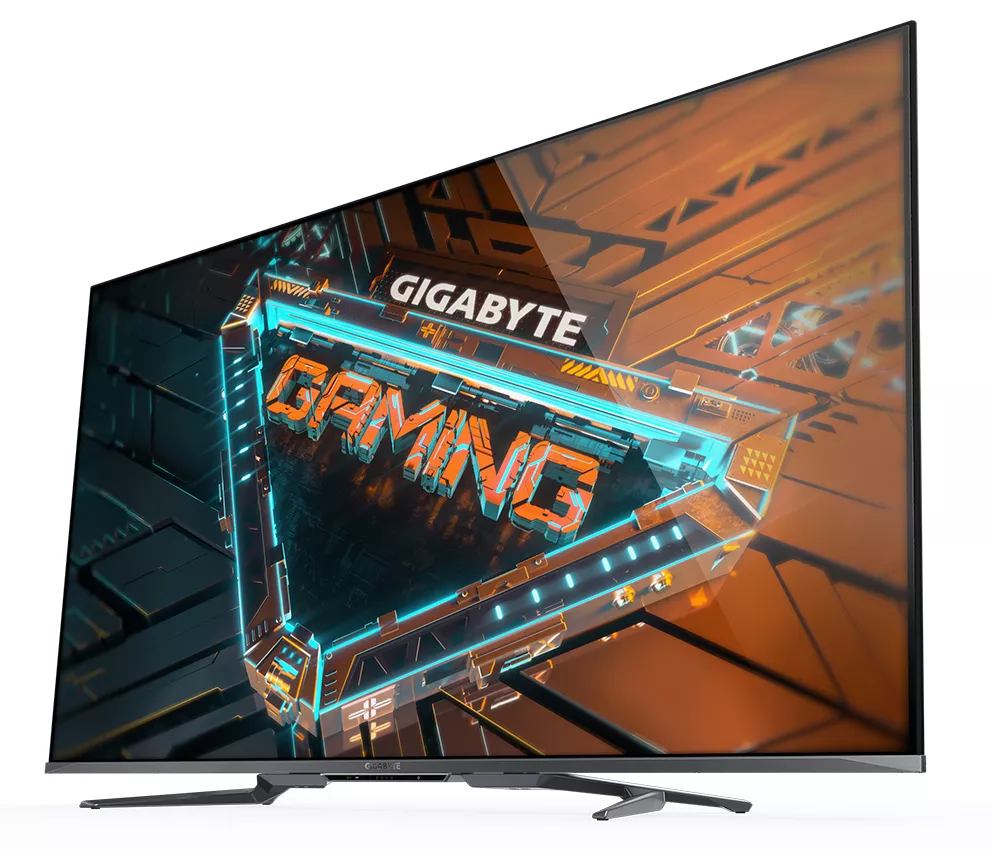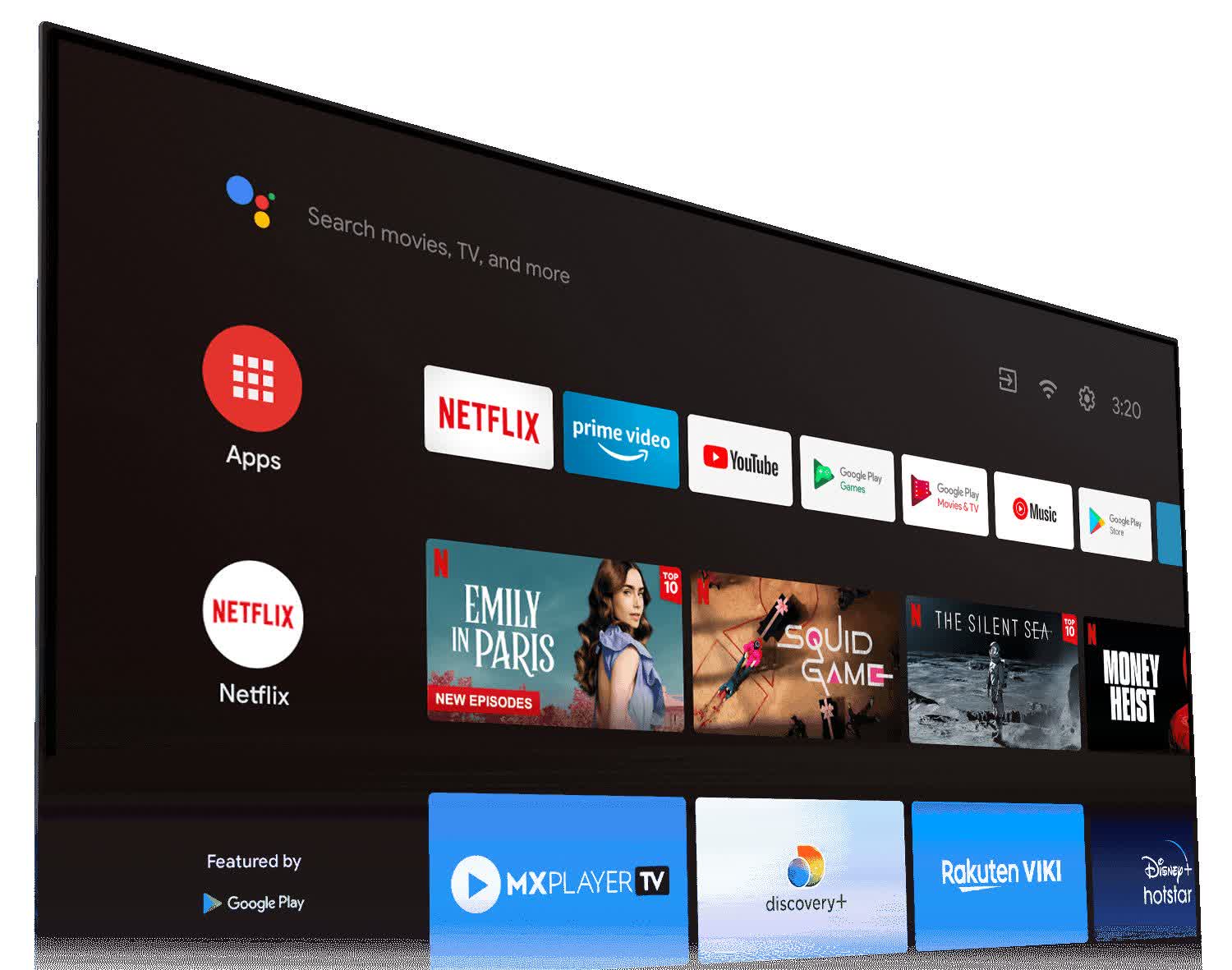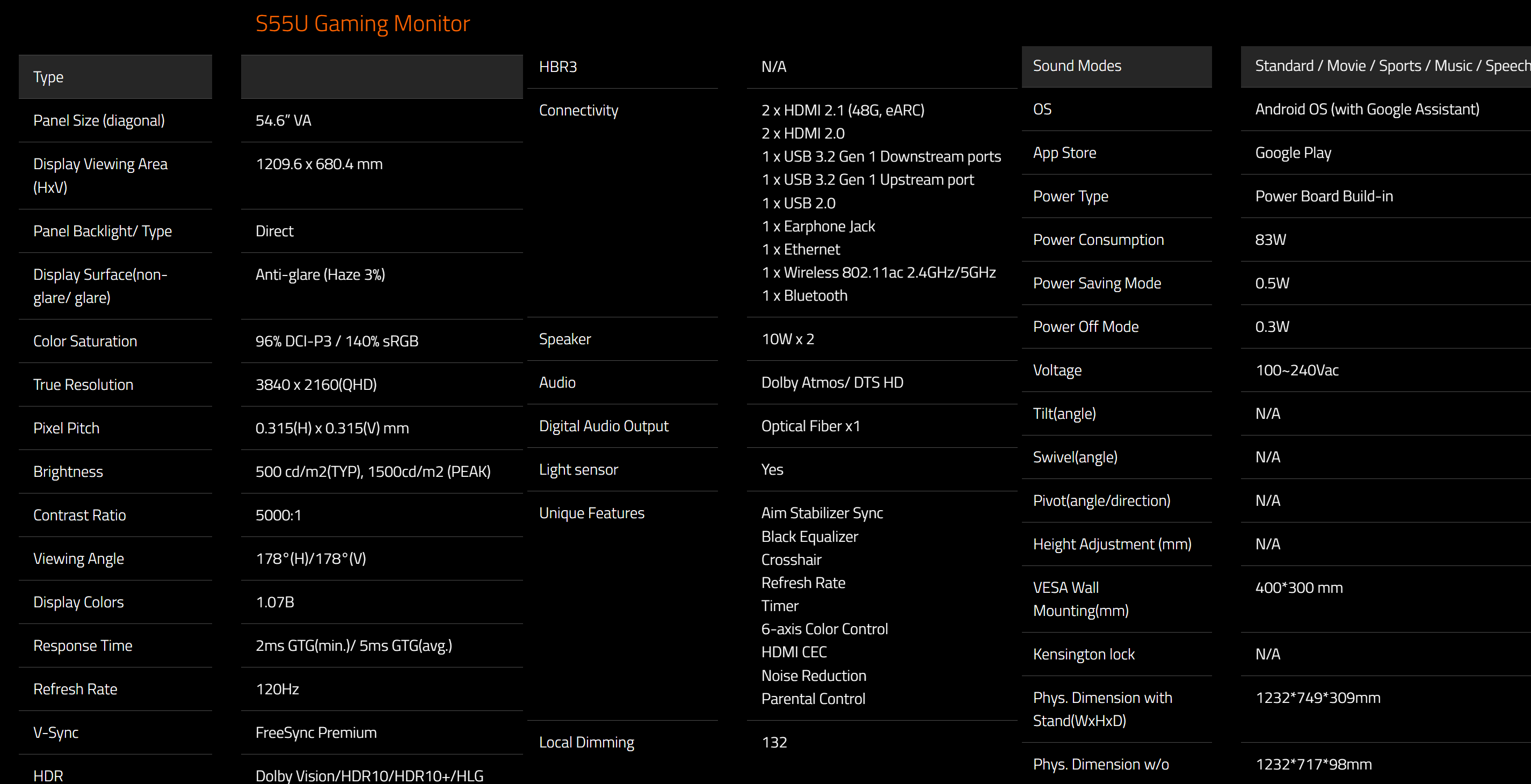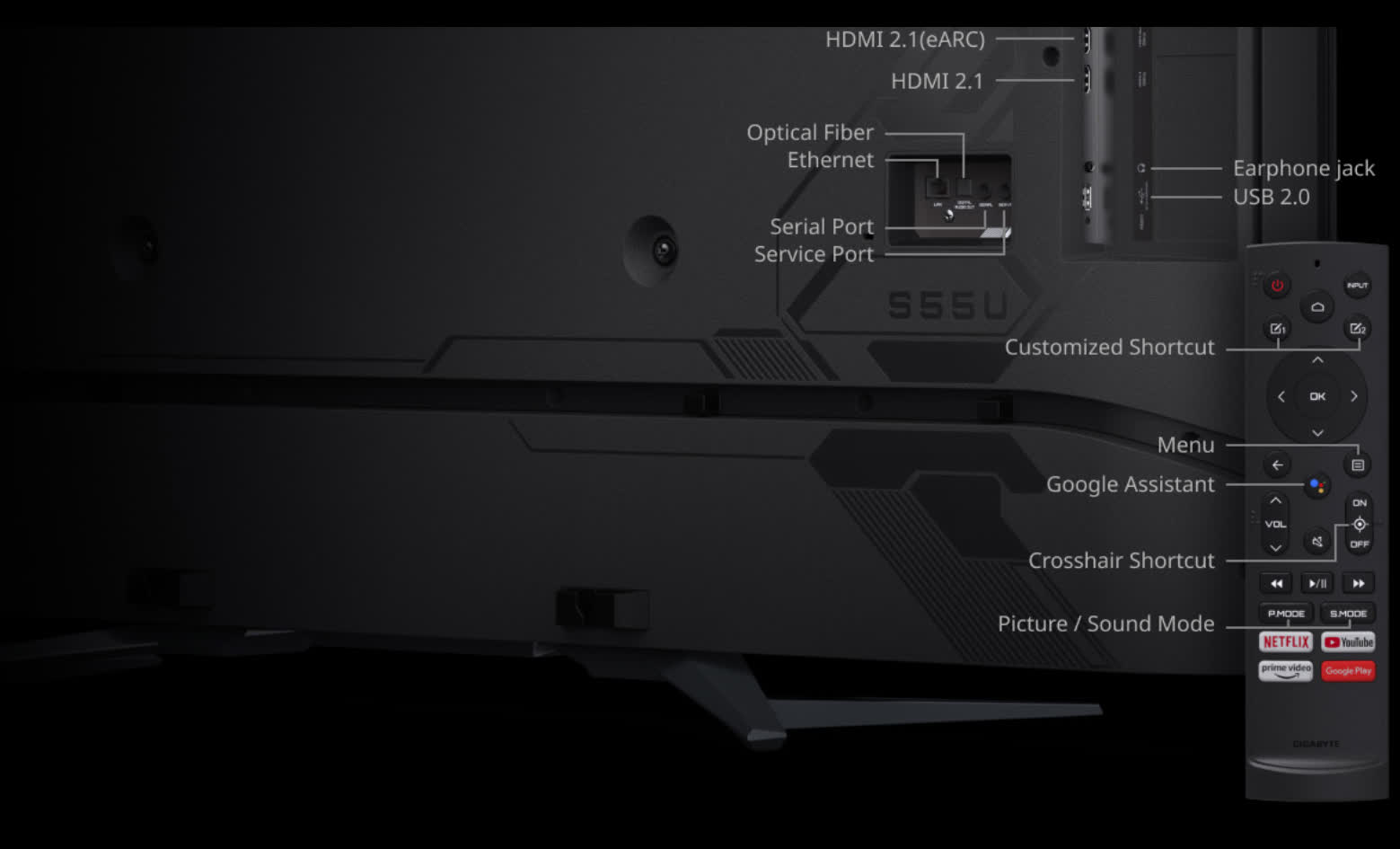What just happened? Gigabyte has announced the launch of its 54.6-inch 4K monitor that was unveiled earlier this year. The S55U is the latest display to try and combine the best elements of a gaming monitor with a smart TV, offering high refresh rates, FreeSync Premium, and android-powered in-built apps such as YouTube and Netflix.

We first saw the S55U back in May. The monitor follows in the footsteps of similar products that mix gaming and home entertainment features. In this case, the 54.6-inch VA panel offers a 4K resolution, 96% DCI-P3/140% sRGB color gamut coverage, 1,500 nits of peak brightness, a 120Hz refresh rate, a 5000:1 contrast ratio, and a 2ms GTG (minimum) response time. It also comes with FreeSync Premium, which goes some way towards Gigabyte's designation of the S55U as a gaming monitor, despite the lack of a DisplayPort input.
On the home entertainment side, the monitor features Android OS, a dedicated Google Assistant button on the remote, and shortcuts for the YouTube, Google Play, Netflix, and Amazon Prime apps. There's also support for various HDR formats, including HDR 10+, HLG, and Dolby Vision, and you get dual 10W speakers with Dolby Atomos/DTS HD support.
Connectivity-wise, there are two console-friendly HDMI 2.1 ports, two HDMI 2.0, one USB 3.2 Gen 1 Downstream port, one USB 3.2 Gen 1 Upstream port, one USB 2.0, one Ethernet, an earphone jack, optical fiber out, wireless 802.11ac, and Bluetooth.
Large-format monitor/TV hybrids are becoming more popular, especially with one of our favorites, the 48-inch LG C1 OLED, now under $800 on Amazon. Gigabyte still hasn't revealed the price of the larger, non-OLED S55U, so it'll be interesting to see how the two compare, especially as several of the company's other products made our Best Monitors of 2022 list.
https://www.techspot.com/news/95199-gigabyte-launches-546-inch-gaming-monitortv-hybrid-android.html


